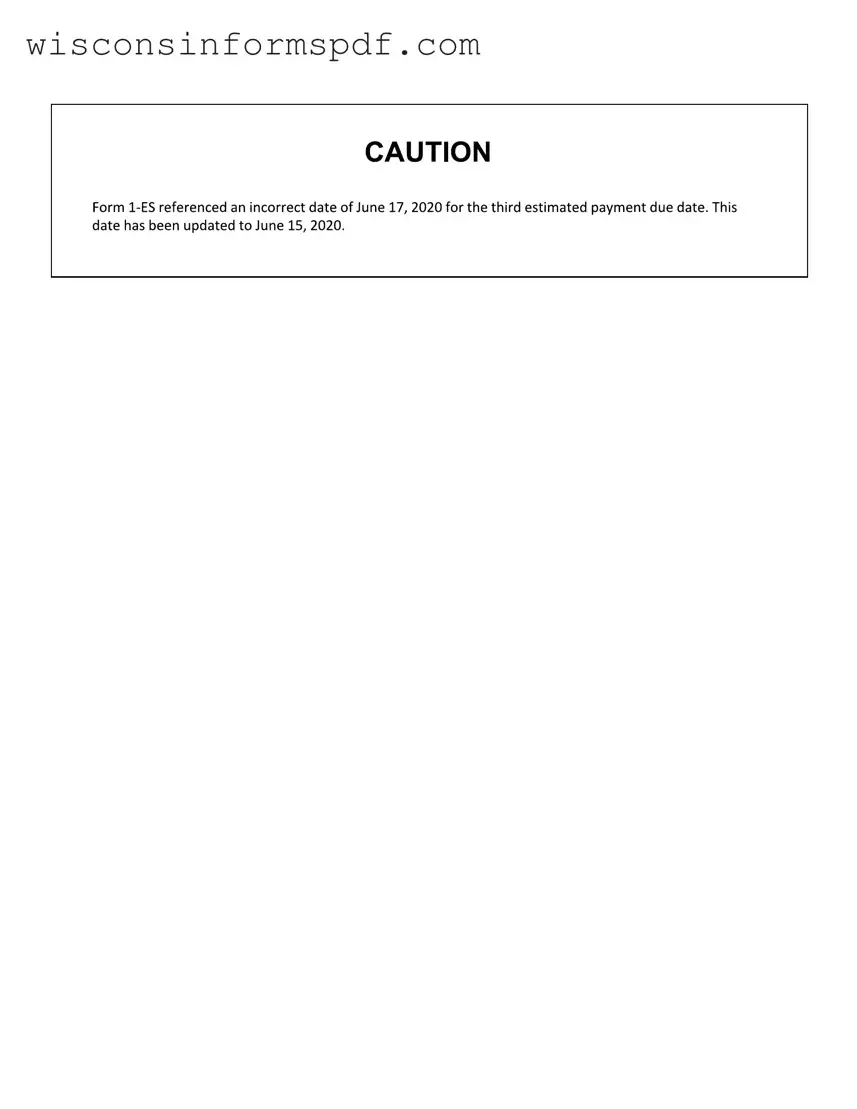What is the Wisconsin 1 Es form?
The Wisconsin 1 Es form, also known as the Estimated Income Tax Voucher, is a document used by individuals, estates, and trusts in Wisconsin to report and pay estimated tax payments on income not subject to withholding. This includes earnings from self-employment, interest, dividends, rents, and gains from the sale of assets.
Who needs to file the Wisconsin 1 Es form?
Individuals, including sole proprietors, partners in a partnership, shareholders in S-corporations, beneficiaries of estates or trusts, and anyone else earning income in Wisconsin that is not subject to withholding must file the Wisconsin 1 Es form if they expect to owe $200 or more in state income tax for the year.
When are the Wisconsin 1 Es payments due?
Payments are due in four equal installments. The due dates are April 15, June 15, September 15 of the current year, and January 15 of the following year. If these dates fall on a weekend or holiday, the due date is the next business day.
How do I calculate my estimated tax payments?
To calculate your estimated tax payments on the Wisconsin 1 Es form, you must estimate your expected adjusted gross income, taxable income, taxes, deductions, and credits for the year. You can use your prior year's tax return as a guide. The form contains a worksheet to help calculate your estimated tax payments.
What happens if I do not file or pay the Wisconsin 1 Es on time?
If you fail to file or pay your estimated taxes by the due date, you may be subject to interest and penalties for underpayment. The Wisconsin Department of Revenue can assess these charges, and they will accumulate until you have paid your due taxes in full.
Can I make Wisconsin 1 Es payments electronically?
Yes, the Wisconsin Department of Revenue encourages taxpayers to make their estimated tax payments electronically through their website. This method is faster, secure, and provides immediate confirmation of your payment.
What should I do if my income changes after I have made estimated payments?
If your income significantly increases or decreases after you have made estimated payments, you should recalculate your estimated taxes as soon as possible. Adjust your remaining payments to reflect your new income estimate to avoid underpayment or overpayment.
Is there a penalty for overestimating my income and overpaying my estimated taxes?
No, there is no penalty for overestimating your income and overpaying your estimated taxes. Any overpayment will be refunded to you or applied to next year’s estimated tax.
How can I get help with filing my Wisconsin 1 Es form?
You can get help by visiting the Wisconsin Department of Revenue's website, where you can find instructions and resources for filing the Wisconsin 1 Es form. Additionally, consulting a tax professional or accountant who is familiar with Wisconsin state tax laws can provide personalized assistance.
Where can I find the Wisconsin 1 Es form?
The Wisconsin 1 Es form is available on the Wisconsin Department of Revenue's website. You can download the form to fill out manually, or you can opt to make your estimated payments electronically, which does not require submission of the physical form.


